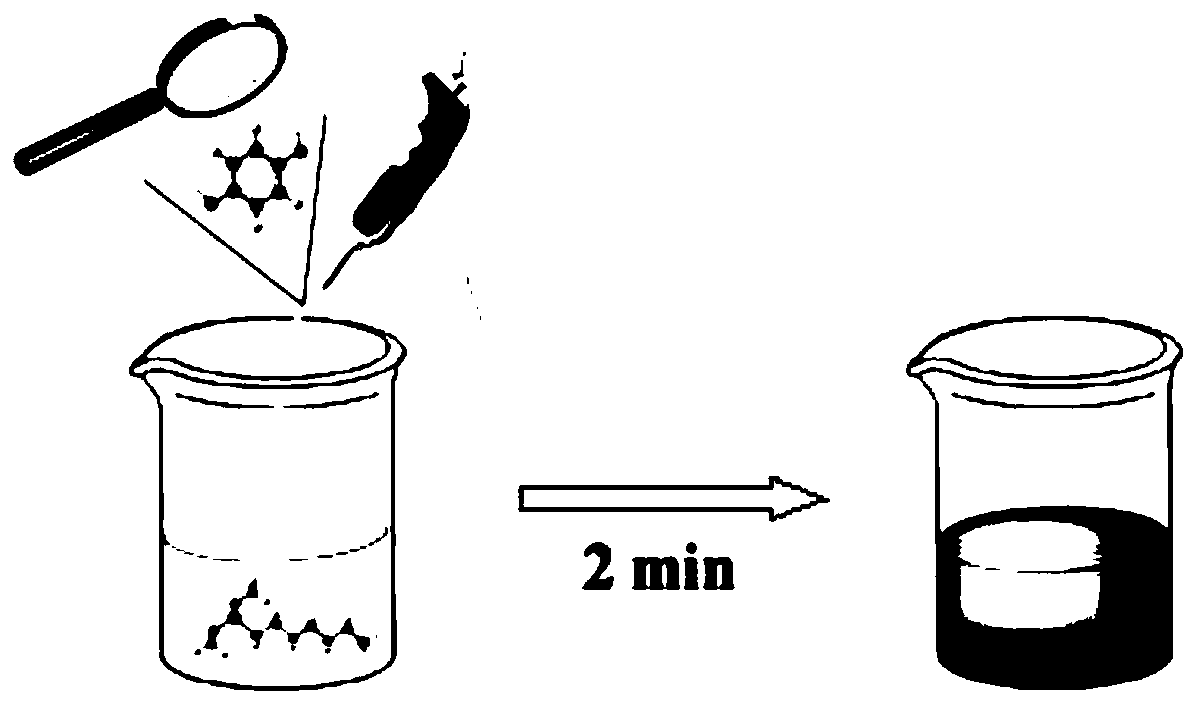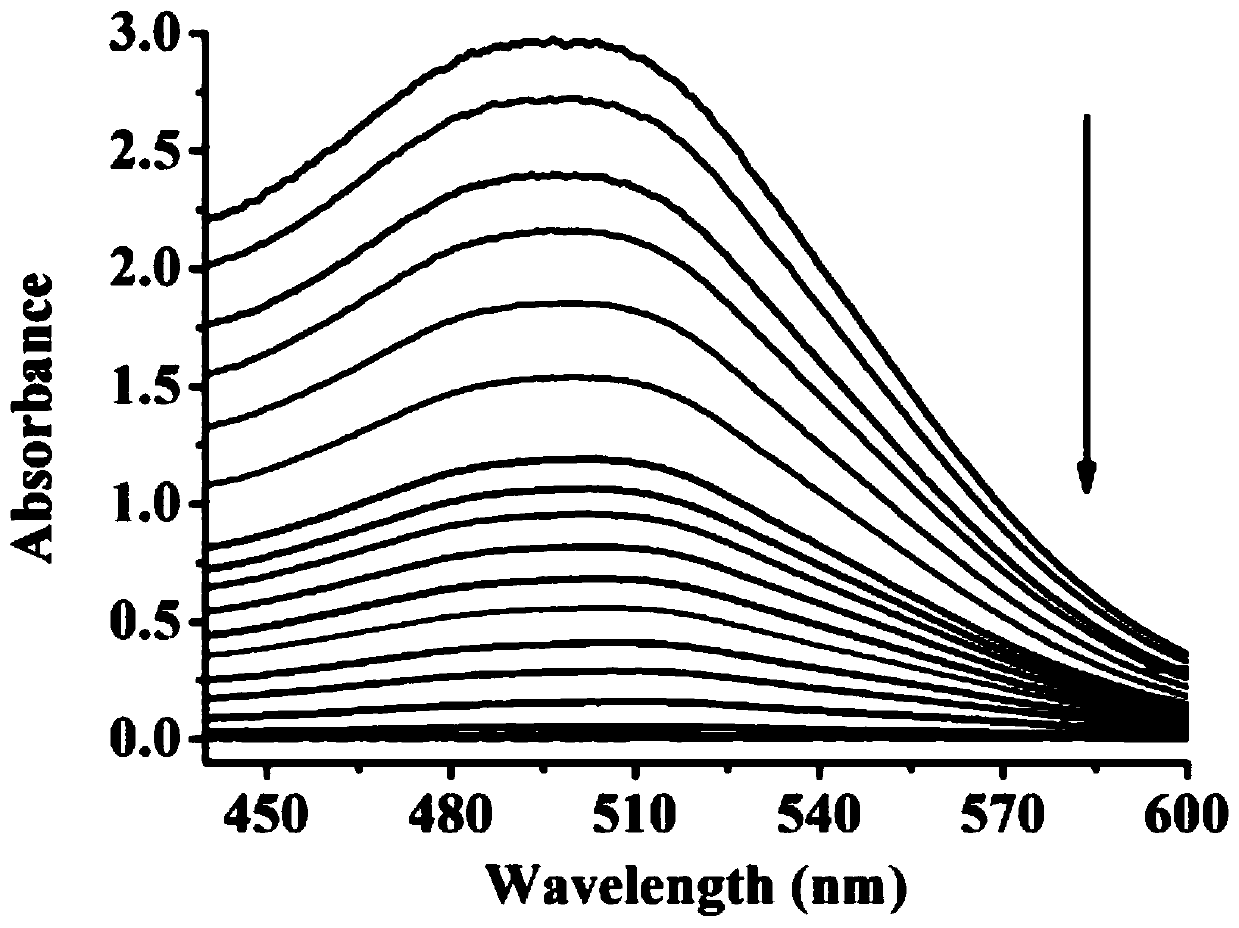Application of n-(2-aminoethyl)-3-aminopropyltrimethoxysilane in detection of hydroquinone
A technology of aminopropyltrimethoxysilane and hydroquinone, applied in the field of chemical analysis, can solve the problems of long reaction time, high detection limit, cumbersome pretreatment process, etc., and achieves fast reaction speed, good specificity, Easy to use effect
- Summary
- Abstract
- Description
- Claims
- Application Information
AI Technical Summary
Problems solved by technology
Method used
Image
Examples
Embodiment 1
[0032] The present embodiment provides a kind of method that colorimetric method detects hydroquinone, comprises the steps:
[0033] 1) Take a standard concentration of hydroquinone solution and add it to the N-(2-aminoethyl)-3-aminopropyltrimethoxysilane solution to make a standard color comparison card;
[0034] Dissolve DAMO in water, prepare DAMO solution at a volume ratio of 1:5 as a detection solution, take a known concentration of hydroquinone standard solution, add it to 4 times the volume of detection solution, and vortex the mixed solution for 2 minutes Finally, photograph the color of the solution with a digital camera to make a standard color card;
[0035] 2) Take the hydroquinone solution to be detected, add it to the N-(2-aminoethyl)-3-aminopropyltrimethoxysilane solution, and make a contrast color card, and compare the color card with the standard color card Comparative detection of hydroquinone.
[0036] Take the solution to be tested, add it to 4 times the ...
Embodiment 2
[0038] The present embodiment provides a method for detecting hydroquinone by absorptiometry, comprising the steps of:
[0039] 1) Get the hydroquinone solution of standard concentration, after adding in the N-(2-aminoethyl)-3-aminopropyltrimethoxysilane solution, obtain the absorbance value of the hydroquinone solution of standard concentration curve or equation;
[0040] Dissolve DAMO in water, prepare DAMO solution at a volume ratio of 1:5 as a detection solution, take a known concentration of hydroquinone standard solution, add it to 4 times the volume of detection solution, and vortex the mixed solution for 2 minutes Finally, utilize a spectrophotometer to scan the ultraviolet-visible spectrum of the above-mentioned mixed solution, take the absorbance value as the ordinate, and the concentration of hydroquinone as the abscissa, draw a working curve, and obtain a one-dimensional linear equation;
[0041] 2) Take the hydroquinone solution to be detected, add it to the N-(2...
Embodiment 3
[0044]This example provides a method for the detection of hydroquinone by colorimetry. A series of hydroquinone standard solutions (0-1000 μM) with concentration gradients are prepared, added to 4 times the volume of DAMO aqueous solution, and vortexed at room temperature Take pictures after shaking for 2 minutes. figure 2 It shows that with the increase of the concentration of hydroquinone, the color of the solution changes from colorless to orange-red, and finally becomes bright red, and the semi-quantitative detection of the concentration of hydroquinone can be realized according to the color change.
PUM
 Login to View More
Login to View More Abstract
Description
Claims
Application Information
 Login to View More
Login to View More - R&D
- Intellectual Property
- Life Sciences
- Materials
- Tech Scout
- Unparalleled Data Quality
- Higher Quality Content
- 60% Fewer Hallucinations
Browse by: Latest US Patents, China's latest patents, Technical Efficacy Thesaurus, Application Domain, Technology Topic, Popular Technical Reports.
© 2025 PatSnap. All rights reserved.Legal|Privacy policy|Modern Slavery Act Transparency Statement|Sitemap|About US| Contact US: help@patsnap.com



